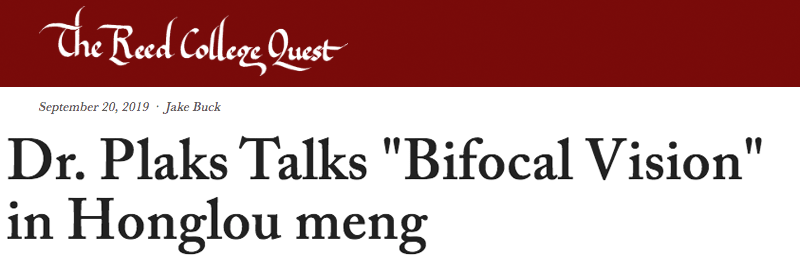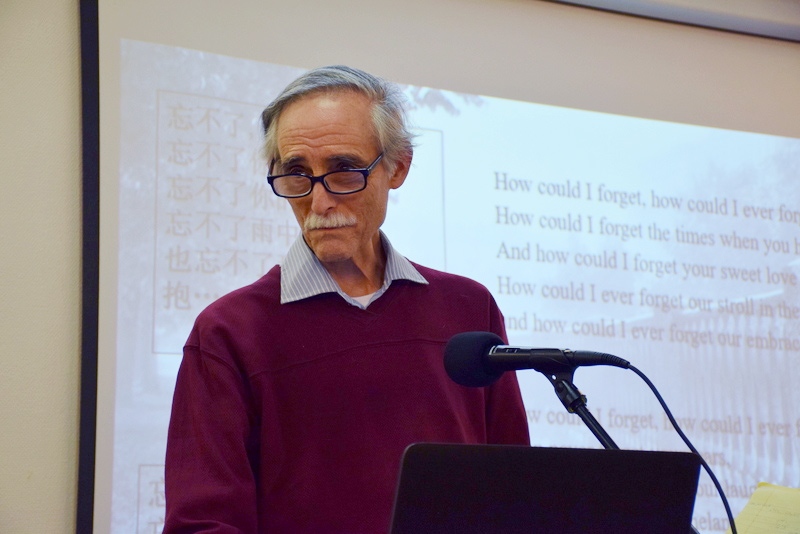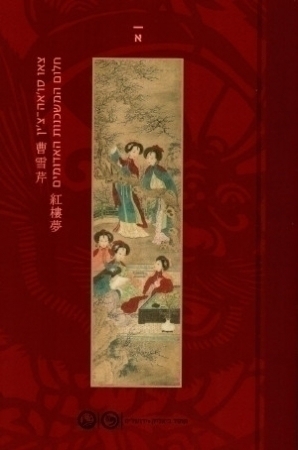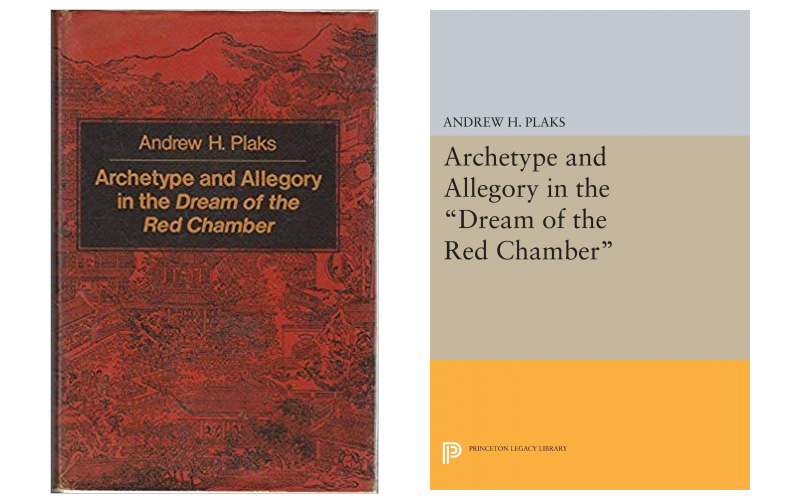

Reed College had the privilege of welcoming Professor Andrew Plaks to campus this past Monday, September 16, to deliver a lecture on Honglou meng, a fountainhead of Chinese fiction considered one of the Four Great Classic Novels of China, often erroneously translated as “Dream of the Red Chamber.” With his upcoming translation of the novel into Hebrew, Plaks continues a long tradition of scholarship devoted to Honglou meng, sometimes referred to as “Redology.” Andrew Plaks taught at Princeton University for over thirty years, where he taught two current Reed Chinese professors, Hyong Rhew and Alexei Ditter. He is currently a professor of East Asian Studies at the Hebrew University of Jerusalem.

The lecture centered around the often difficult relationship between history and literature, more specifically between reality and fiction. This “bifocal vision,” as argued by Plaks, permeates many aspects of this historical novel, leaving readers with questions of historical accuracy. The novel centers around the Jia family, a homophone for the Chinese word “fake,” which already invites the reader to question the relationship between “real” world and the “self-contained perfection” of the novel’s setting. One key source of distortion is an apparent lack of definitive historical time to anchor the novel. Although it was probably written by Cao Xueqin sometime during the mid eighteenth century (later completed and first published in 1791), most scholars suspect an earlier setting by several decades, as evidenced by a close historical reading. Plaks pointed out several of these coordinates, such as linking references to floods to documented records, that offer to hang the narrative onto history. Although it has been the subject of much scholarly debate, this endeavor is not without its problems, however, when one considers how solving the problem of dating reveals little about what the text communicates. Historical novels often evoke the past to discuss the present, and Honglou meng is no exception. Anti-Manchu sentiment espoused by the ethnic Han majority was still pervasive well into late nineteenth century, and any departure from history cannot be divorced from this prejudice that occupied much of the Qing dynasty (1644-1912) literature. For example, the practice of foot binding, which permeated the culture of the Qing, is nowhere to be found in the novel, suggesting a more subversive interpretation. Plaks lists several more instances in which the novel presents a mix of Han and Manchu cultures, obfuscating the enthic identities of the characters.
Plaks’s lecture attempted to condense a whole book of information down into two hours, which ultimately prevented an in-depth analysis of any particular passage. His lecture did, however, provide insight into just how vast the scholarship of Honglou meng can reach.
His translation of Honglou meng continues the journey that started with the publication of “Archetype and Allegory in the Dream of the Red Chamber“, originally published in 1976 and then reprinted in 2015 as a paperback and again in 2016 as a hardcover by Princeton University Press.
